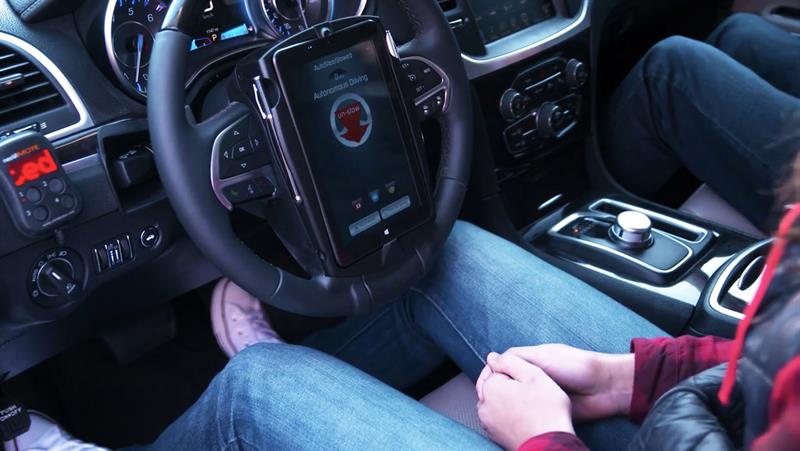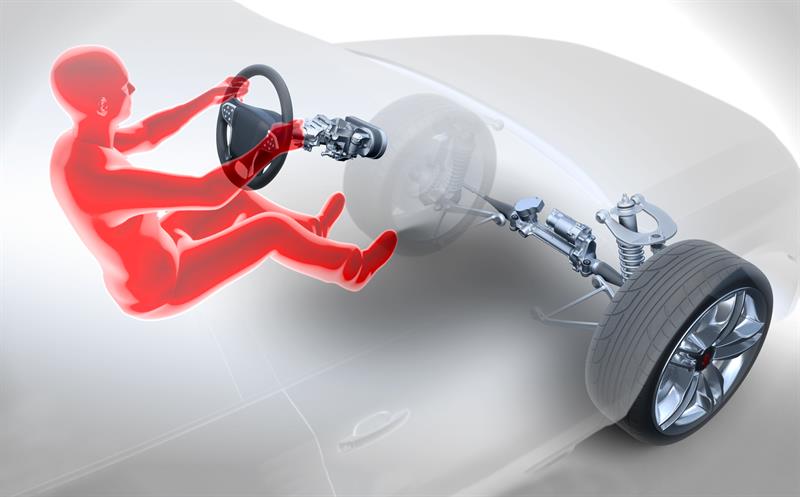The range includes the Steering on Demand System, Quiet Wheel System, Stowable Steering Column, Steer-by-Wire, High Availability Electric Power Steering and Cyber Secure Advanced Steering.
Jeff Zuraski, executive director of research and development at Nexteer, says: “While these industry-leading innovations can each stand on their own merit, the real game-changer is the combination of technologies in a single suite.”
US-based standards development organisation, SAE International published its six-level classification system, from manual to fully autonomous vehicles, in 2014. The system is based on the amount of driver intervention and attentiveness required, rather than the capabilities of the vehicle. The system goes from Level 0 – where the automated system issues warnings and may momentarily intervene but has no sustained vehicle control – to Level 5 where there is no steering wheel and absolutely no human intervention is required to operate the vehicle.
Nexteer’s suite is aimed at Level 3 and above; where the driver no longer needs to monitor the driving environment and can concentrate on performing other tasks like texting or watching a movie. However, at Level 3, the driver still needs to be ready to intervene when the vehicle requires them to do so.
Steering on Demand System
 With the press of a button or simply by grabbing the steering wheel, the Steering on Demand System is said to enable the safe, intuitive transition of steering between manual driving and automated driving in vehicles capable of SAE Level 3, 4 and 5. The system also enables the driver to choose between driving performance options including sport, comfort and manual override modes that can be selected via a tablet installed in the centre of the steering wheel.
With the press of a button or simply by grabbing the steering wheel, the Steering on Demand System is said to enable the safe, intuitive transition of steering between manual driving and automated driving in vehicles capable of SAE Level 3, 4 and 5. The system also enables the driver to choose between driving performance options including sport, comfort and manual override modes that can be selected via a tablet installed in the centre of the steering wheel.
Quiet and stowable
To eliminate potential distractions and hazards of a rotating steering wheel in front of the driver during hands-off mode, Nexteer’s Quiet Wheel Steering enables the steering wheel to remain still during automated driving, even while the vehicle is turning.
Vehicles equipped with Quiet Wheel Steering may also be fitted with a ‘stowable’ column that retracts during automated driving, increasing available space for driver comfort and other activities.
It also allows for the driver to engage with the tablet installed in the centre of the steering wheel, which includes a keyboard that folds out from behind it. This lets the driver text, email or type. Alternatively, the keyboard can be rotated to become a tray for placing food and drinks or taking notes. Or they can simply watch a film or TV programme.
Steer-by-Wire

Steer-by-Wire replaces the mechanical connection between the front tyres and the steering wheel with electronics and actuators on the steering column and rack. This system supports both manual and automated driving, and opens new possibilities for packaging flexibility and lightweighting. Nexteer’s Steer-by-Wire is said to be able to emulate the ‘feel of the road’ and offers a range of performance options – from sporty to luxury. In addition, the system’s variable steering ratio is even claimed to enhance manoeuvrability.
Safety net always on
“When we started, Nexteer had one simple question: what will people want to experience in steering control during varying stages of semi- and fully-autonomous driving?” says Zuraski. “As we painted a clearer picture of the evolving role of steering in a semi- and fully-automated world, we started creating solutions that led to our suite of technologies under our Steering on Demand System’s umbrella.”
Nexteer’s electric power steering is designed for resilient operational availability, using top-rated components that are intelligently optimised through redundancies in torque and position sensors, electronic control units, winding motors as well as dual sets of vehicle power and communication connectors. In addition, Nexteer’s simultaneous, multi-path processing further enhances the safety net as the industry moves toward varying levels of automation.
Cyber secure steering
As vehicles adopt advanced electronics to enable automated driving, internet connectivity and vehicle-to-vehicle (V2V)/vehicle-to-infrastructure (V2X) communication, cyber secure steering technologies are becoming more critical.
While he says its customers tend to incorporate cyber security at the vehicle level, Zuraski says Nexteer takes safety up a gear by integrating multi-layer cyber security at a steering system level for maximum protection. These cyber security technologies consist of specifically designed hardware modules on the semiconductor level, as well as a multi-layered cryptographic software structure, that identifies and authorises information and command flow between the steering system and other in-vehicle or external controllers.
While Nexteer’s steering technology suite addresses current and future needs in steering control, its R&D joint venture with Continental Automotive – CNXMotion – allows for expanded application by integrating steering with braking solutions.
This technology is not just for cars and small vehicles either, through a collaboration with WABCO Vehicle Control Systems, Nexteer also provides solutions for medium- and heavy-duty vehicles up to HGVs. The companies involved in this venture are developing and supplying active steering systems for commercial vehicles using Nexteer’s Magnetic Torque Overlay (MTO). The MTO allows these vehicles to perform actions such as pull compensation, park assist, warning of lane departure, active damping and more.
Boasting a customer list that includes Ford, Fiat Chrysler, VW, Toyota, GM and BMW, the chances are these technologies could begin appearing in production vehicles soon. It also gives an indication of what the automotive industry envisages is the next big challenge on the road to fully autonomous vehicles; with sensor and V2V/V2X systems maturing, focus is shifting to the removal of mechanical elements and the introduction of entertainment systems.





